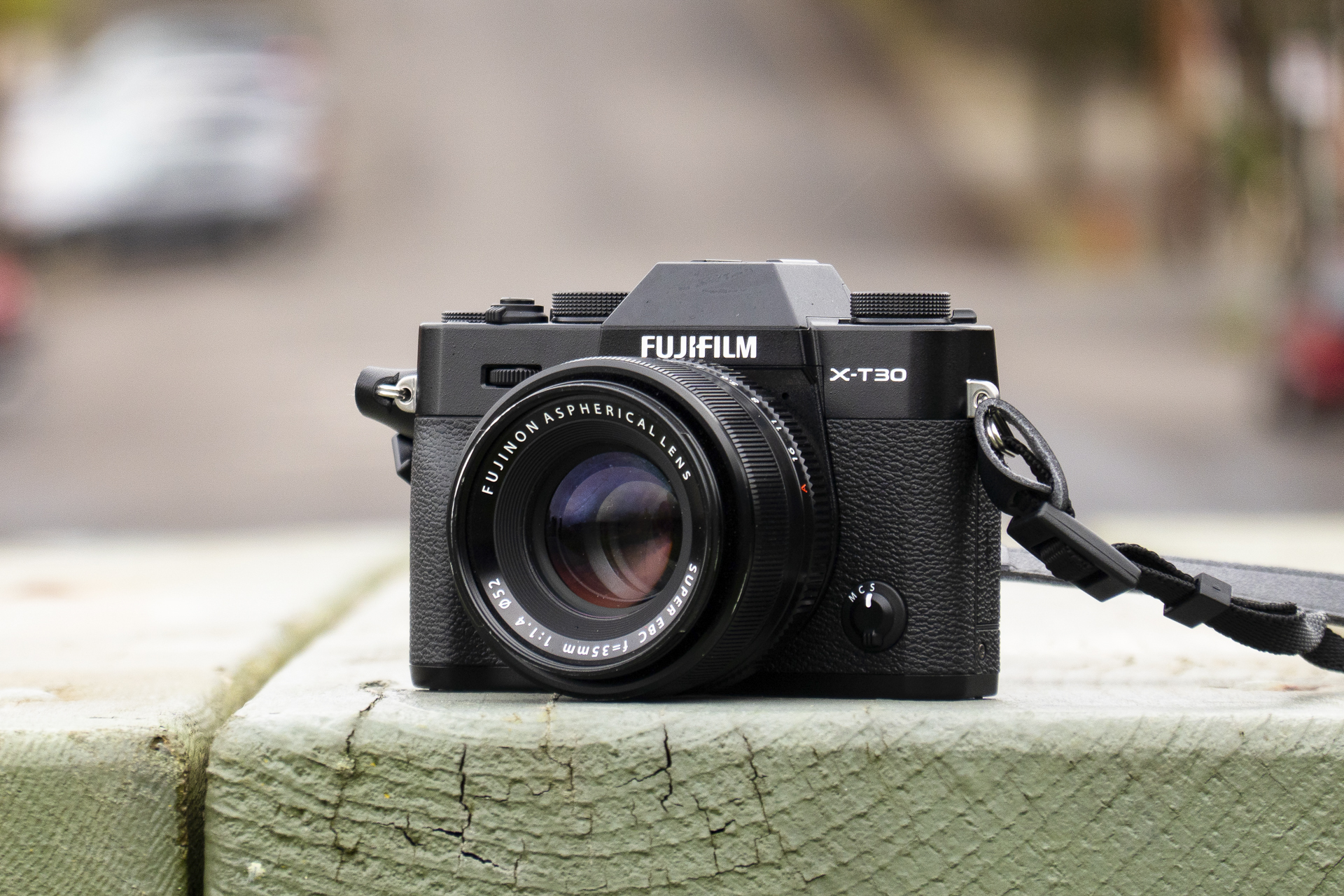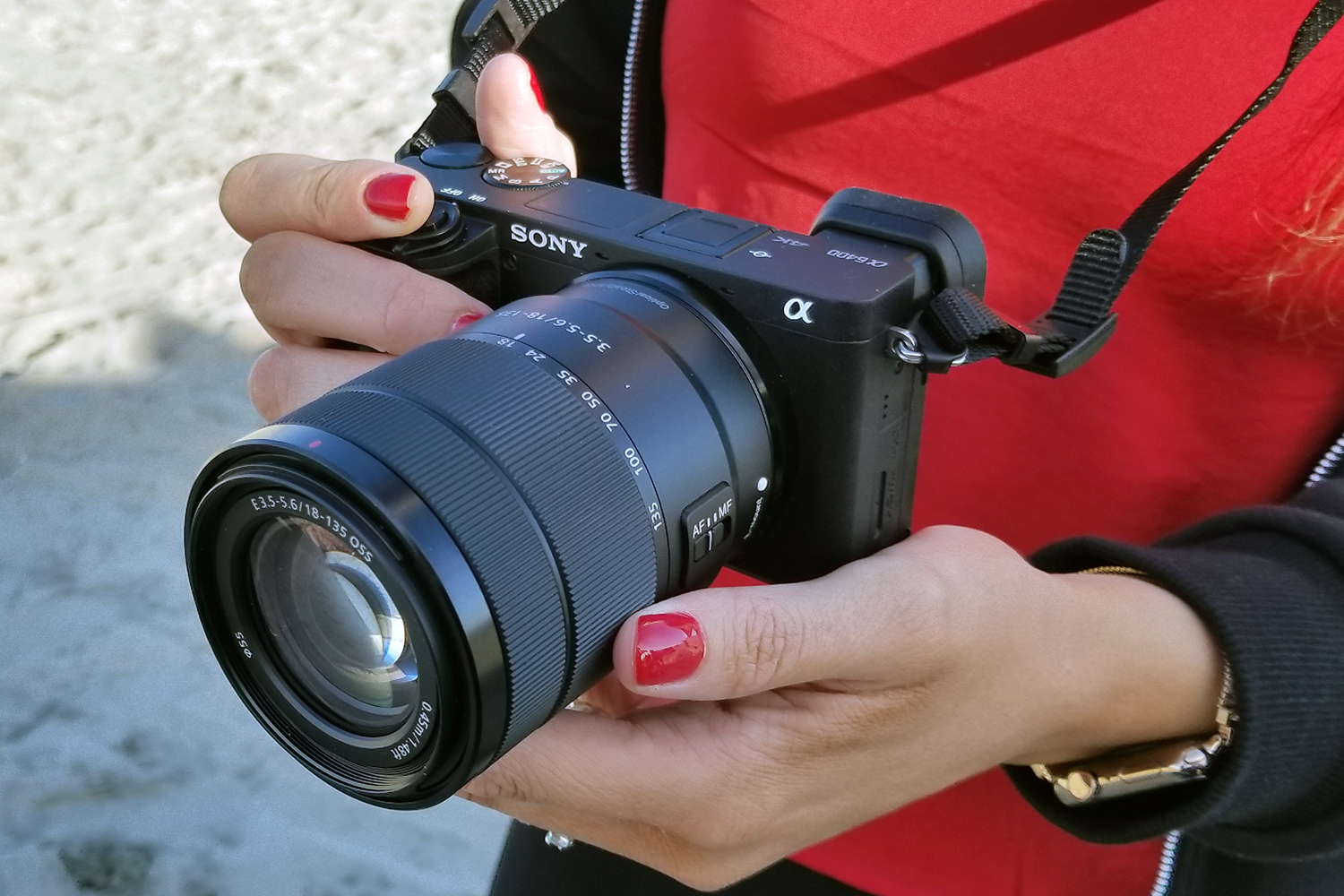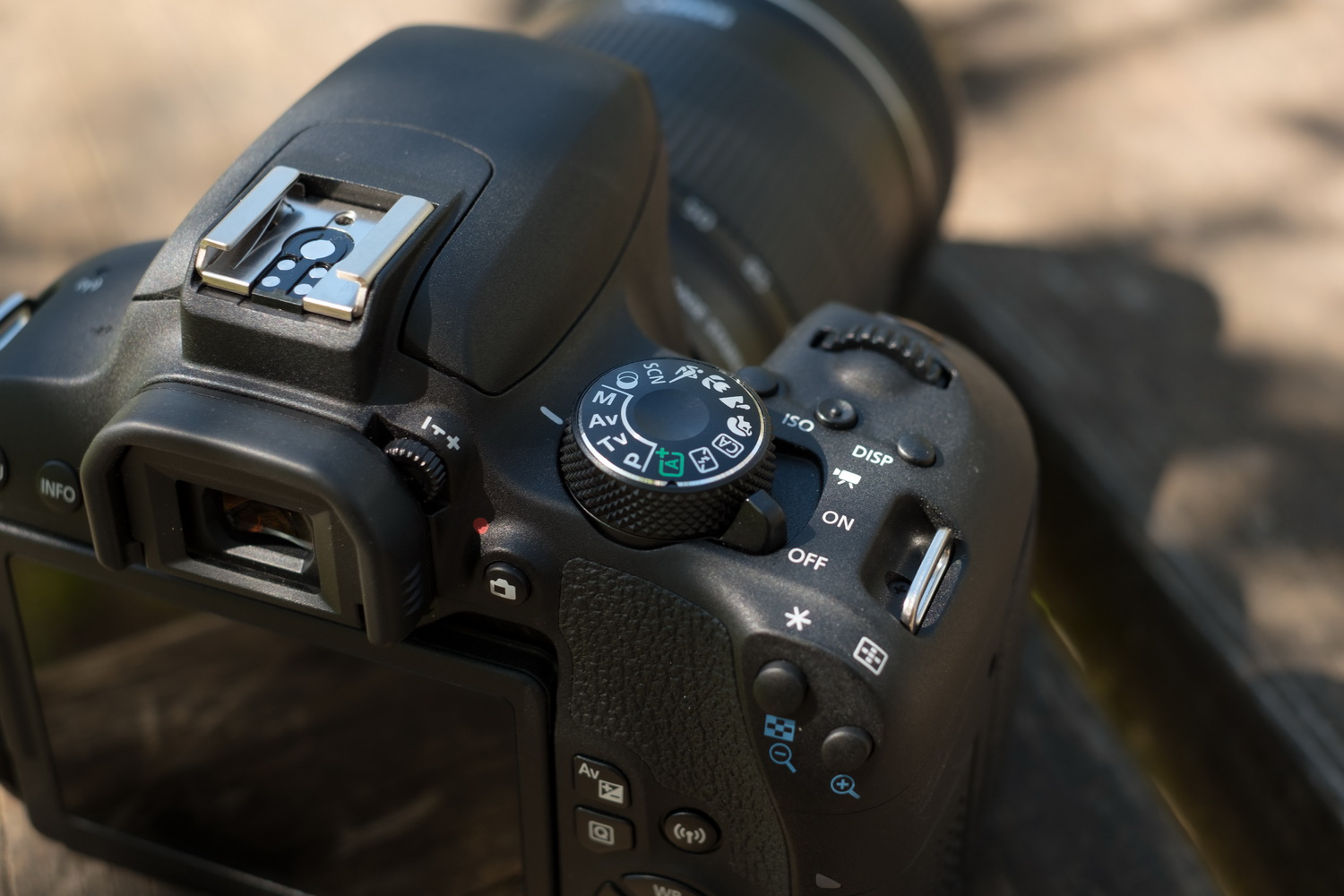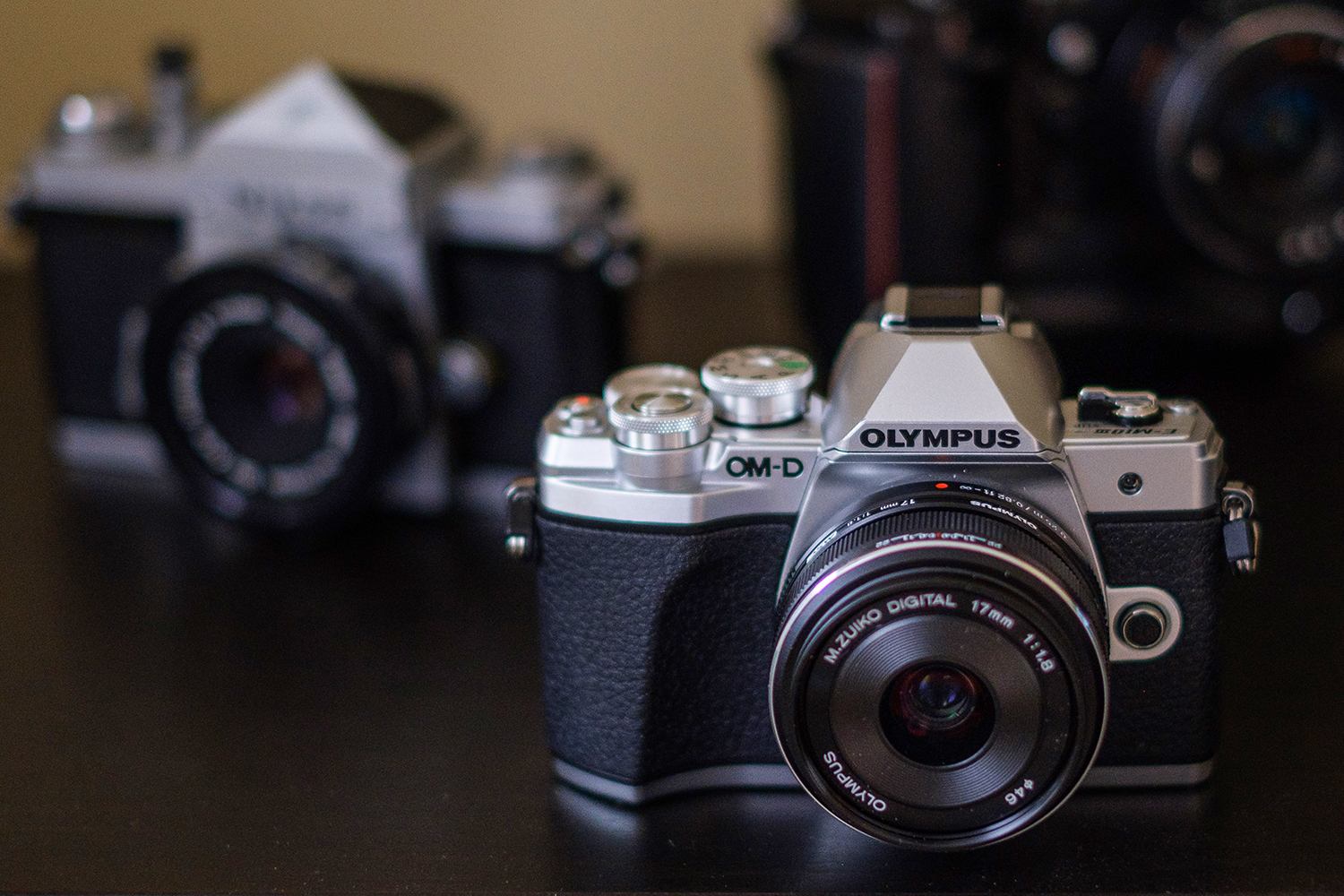
Finding a great camera that doesn’t breach four figures doesn’t have to be a challenge if you know where to look. There’s some stiff competition, but we chose the Fujifilm X-T30 as the best camera under $1,000. It combines great design, solid image quality, and fast performance with an engaging user experience that helps it stand out from the crowd. It also offers a strong mix of features that make it approachable to beginners and experienced photographers alike. The $900 camera encompasses almost everything that’s great about the flagship Fujifilm X-T3, but for $600 less. But if the Fujifilm isn’t your flavor, nearly every manufacturer has a solid option, from Sony to Olympus. Here are our top picks for cameras sitting pretty at under $1,000.
At a glance
- Best camera under $1,000: Fujifilm X-T30
- Best mirrorless camera kit under $1,000: Sony A6400
- Best DSLR kit under $1,000: Canon EOS Rebel T7i
- Best travel camera kit under $1,000: Olympus OM-D E-M10 Mark III
- Best full-frame camera under $1000: Sony A7 II
The best camera under $1,000: Fujifilm X-T30

Why you should buy this: Stellar image quality, fast performance, and 4K video wrapped in classic good looks.
Who’s it for: Beginners, enthusiasts, and semi-pros
Why we picked the Fujifilm X-T30:
Fujifilm did everything right when it comes to choosing what high-end features to trickle down into more budget-friendly models. The Fujifilm X-T30 actually has the same sensor and processor as the company’s highest-end APS-C camera, the X-T3. That means you won’t be able to detect a difference in image quality between the two models.
With the same processor as the X-T3, the X-T30 also doesn’t suffer from the sluggishness of many other budget-friendly models. The burst rate is a solid 8 fps, or even 20 fps if you’re okay with using the electronic shutter. Even the autofocus is quick, using 425 points to quickly lock onto subjects, even ones that are moving.
So if the X-T30 has the same sensor and processor as the X-T3, why is it $600 cheaper? The camera’s design is where the price difference is most obvious. The X-T30 doesn’t have the weather sealing or dual SD card slots of its big brother. It is also smaller overall, with fewer physical controls. On the plus side, that makes it 6 ounces lighter.
The Fujifilm X-T30 is everything that a budget-friendly camera should be, with the biggest features still intact and some less important features whittled away. The X-T30 is available body only for about $900, with the 15-45mm kit lens for a penny shy of $1,000, or with the 18-55mm f/2.8-4 kit lens for around $1,200.
The best mirrorless camera kit under $1,000: Sony A6400

Why you should buy this: Excellent images, stellar autofocus performance, and an excellent list price
Who’s it for: Enthusiasts and beginners
Why we picked the Sony A6400:
Sony’s A7 and A9 cameras are increasingly used by professionals and all manner of serious photographers, but Sony has brought some of that same high-end tech to the Sony A6400. Unlike the A7 series, the A6400 uses a smaller APS-C sensor, just like the X-T30. But, unless you go with a model that’s several years old like the original Sony A7, you can’t get a current generation full-frame camera for under $1,000. And for most users, an APS-C sensor is plenty, not to mention beyond the tiny sensor inside your smartphone. Despite the smaller sensor, the A6400 still performs remarkably well in low light.
Sony’s early focus on bringing the mirrorless design to pro-level use has given the company an edge in autofocus, and it’s an edge that leaks into the APS-C cameras for enthusiasts and beginners too. The autofocus system uses artificial intelligence to boost performance, locks on quickly, tracks subjects well, and also has a great eye-detection AF mode for portraits.
The Sony A6400 body has a more modern look and feel compared to the Fujifilm X-T30. The LCD screen will flip up 180 degrees for vlogging or selfies, and it weighs in at a compact 14.3 ounces. And for photographers that don’t have a stash of compatible lenses already, the A6400 can be picked up with the 16-50mm kit lens for $998.
DSLR camera kit under $1,000: Canon EOS Rebel T7i

Why you should buy this: Excellent images and fast autofocus performance at an even better price point
Who’s it for: Beginners and enthusiasts
Why we picked the Canon EOS Rebel T7i:
Few beginner cameras impress us like the Canon EOS Rebel T7i. While the camera has a low price and a guided menu system aimed at making it approachable to beginners, it packs in features that will also appeal to the more stringent enthusiast group. The 24-megapixel APS-C sensor snaps solid images for both RAW and JEPG files, the 45-point viewfinder autofocus system is the best in its class, and you can get all-day battery life out of it.
Canon’s Dual Pixel autofocus system, for video and live view shooting, is a huge plus here, and leagues ahead of how even the more expensive Nikon D7500 focuses in live view. The 6-fps burst speed isn’t as great as the D7500’s, but there’s also a significant price difference to help you forget about those two frames. The T7i also doesn’t include 4K video, but its 1080p video is quite useful thanks to the fast and accurate Dual Pixel Autofocus.
The T7i has fewer controls than a high-end DSLR, which can be a good or bad thing, depending on the type of user. Fewer controls are less daunting for beginners, but mean more menu digging for more advanced users. Still, the camera is well-built and uses a flip out LCD screen that’s great for vlogging or selfies.
If the upper end of that $1,000 price point scares you, the Canon EOS Rebel T7i can be picked up for just $700, or $800 with a kit lens.
Best travel camera kit under $1,000: Olympus OM-D E-M10 Mark III

Why you should buy this: Lightweight and attractive design, image stabilization, 4K video, and a compact kit lens
Who’s it for: Beginners and enthusiasts
Why we picked the Olympus OM-D E-M10 Mark III:
The Olympus OM-D E-M10 Mark III packs in one big feature that most budget cameras lack: in-body stabilization. While the 2017 camera isn’t Olympus’ latest camera, it’s one of the few to offer stabilization on a budget. The five-axis image stabilization is a big help for shooting in low light as well as working with longer zoom lenses. While the camera only costs $649, the E-M10 Mark III packs in some high-end features, including 4K video.
The image quality and speed, however, aren’t quite as good as the rest of the cameras on this list. That’s due in part to a smaller Micro Four Thirds sensor rather than the larger APS-C sensors found inside the Fujifilm, Sony, Nikon, and Canon models above. The camera performs well for the Micro Four Thirds category, but don’t try to shoot low light action photos with this budget model.
But, that Micro Four Thirds also means a smaller body, and smaller lenses with more reach, compared to APS-C cameras. If you are looking for a budget camera that packs in high-end features like image stabilization and 4K video into a portable form factor, the Olympus E-M10 Mark III isn’t a bad buy. It also features a retro design that could give the X-T30 a run for its money.
Olympus OM-D E-M10 Mark III review
Best full-frame camera under $1,000: Sony A7 II

Why you should buy this: Excellent full-frame images that look like you spent much more
Who’s it for: Enthusiasts and semi-pros eyeing a good deal
Why we picked the Sony A7 II:
Full-frame cameras for under $1,000 are no longer just a pipe dream — you just have to be OK with an older model. The Sony A7 II was released in 2014 and has since been replaced with the A7 III, but the camera was very advanced for its time and doesn’t feel too ancient. It was the first Sony model to introduce weather sealing and in-body stabilization, features that help it remain attractive today.
The A7 II sports a 24-megapixel sensor — the same resolution as the newer mark III model. Because that full-frame sensor is about twice as large as the APS-C sensor in the Sony A6400 above, it collects more light and offers better low light performance. Additionally, it can achieve a shallower depth of field at the same aperture, something portrait photographers love about full-frame cameras. That sensor is also mounted to an excellent 5-axis stabilization system that helps keep your shots sharp when shooting in low light at slow shutter speeds, or when working with long telephoto lenses which can be hard to hold steady.
Newer Sony cameras do have more advanced autofocus — including the A6400 above — but the focus performance in the A7 II is still commendable and should work fine for all but the most demanding scenarios, such as sports and action photography. The A7 II is also quite a bit slower than its mark III replacement, with a maximum burst rate of just 5 frames per second, half that of the A7 III. You also won’t find 4K video here and are instead limited to 1080p. Sony’s newer full-frame models also offer significantly improved battery life and other tweaks across the board.
If you can get away without the latest and greatest tech, the Sony A7 II still offers image quality that rivals the best full-frame cameras of today. It’s a great buy that will get you into professional-level image quality without breaking the bank, and it’s not uncommon to find it on sale below the list price.
We’ve also found a few Black Friday camera deals for those that want to be saving money on some of the best cameras by leveraging Black Friday sales.



